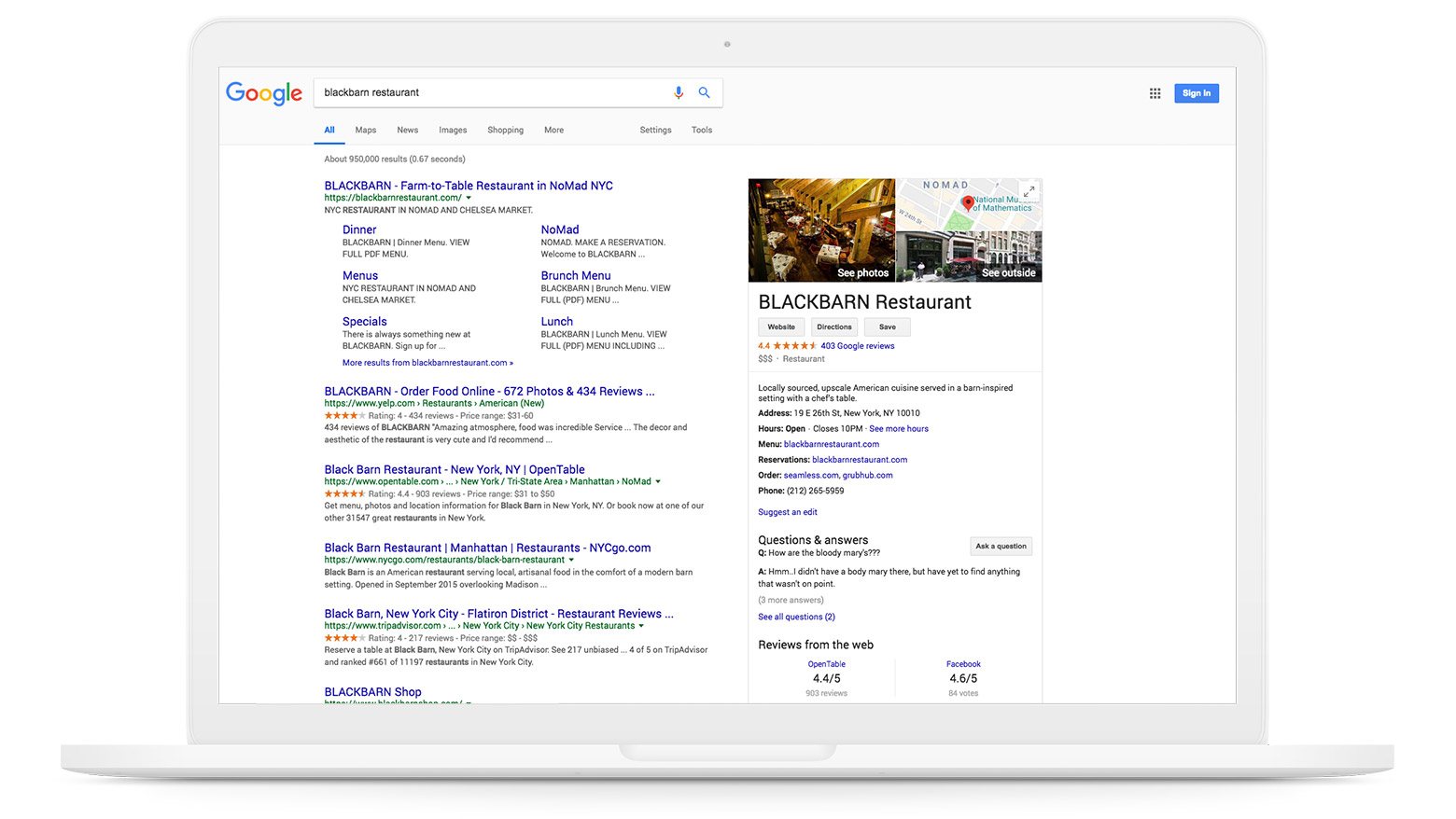Industry Insights
How the Knowledge Graph Impacts Your Business
In 2012, Google launched its Knowledge Graph, a knowledge base that pulls facts from a variety of sources that helps search results align more closely to the searcher’s intent. The Knowledge Graph has fundamentally changed how and where we find information online. We now see rich search results that often provide the facts directly on […]

Marc Ferrentino
Oct 5, 2018

In 2012, Google launched its Knowledge Graph, a knowledge base that pulls facts from a variety of sources that helps search results align more closely to the searcher's intent. The Knowledge Graph has fundamentally changed how and where we find information online. We now see rich search results that often provide the facts directly on the SERP. A restaurant search today returns a knowledge card that shows the address, hours, phone number, photos, and reviews. With a single click, the searcher can see a menu directly on the SERP, or request directions, make a reservation, or order food with a single click.
 For consumers, this change has been revolutionary. We no longer need to click around a business's website to find the facts we are searching for. But for brands, this change has presented a challenge: How can businesses ensure that the facts about their brand are easily accessible to the many third party search engines, maps, apps, and voice assistants people use everyday?
For consumers, this change has been revolutionary. We no longer need to click around a business's website to find the facts we are searching for. But for brands, this change has presented a challenge: How can businesses ensure that the facts about their brand are easily accessible to the many third party search engines, maps, apps, and voice assistants people use everyday?
To succeed in this new world, you need a solution for the way modern consumers search for and discover information. Here are three steps to gain control of the facts about your brand so that any of these AI-powered discovery services can recognize your brand as the trusted source of truth and display accurate information about you to consumers.
1. Structure your data.
Schema markup is what gives your pages context, so that search engines like Google, Bing, and Yahoo can surface the right information to consumers.
The Knowledge Graph relies on this Schema markup on your pages to surface the right information in their rich results. It's essentially a marker for search engines to quickly read a page, take the right information, and map it to where they want to display it in their result.
For example, if we visit a restaurant website and read the words "blueberry pancakes $12.00," we know that blueberry pancakes are on the restaurant's menu, and that an order costs $12.00. Google's Knowledge Graph and other search engines need help to parse this information. Schema markup tells the search engines exactly what these pieces of information are, so they don't have to guess or rely on context clues.
Want to know if your pages have the right Schema? Try the Structured Data Testing Tool.
2. Manage your digital knowledge.
Schema markup alone doesn't tell search engines what the facts about your brand are, though. It simply tells them whereto find those facts, so they can crawl the page and surface the correct facts into search results.
You'll need your own way to help manage the facts about your brand, and to send that information out to both your own website and directly to the other third-party services where consumers searching. That's where Digital Knowledge Management comes in.
Like each service's Knowledge Graph, your Digital Knowledge Management platform should contain the relevant entities that make up your brand —the people, places, and things — and the facts that your consumers want to know about those entities — like addresses, reviews, phone numbers, event details, calorie counts, photos, and more.
This platform must be able to handle context — and store how your facts are interrelated. For example, an event taking place in one or more of your locations should be able to pull in the relevant location details without having to re-enter the information. You should be able to see all the events taking place at each of your locations. This platform should be a direct reflection of what your customers want to see online.
3. Plug into other Knowledge Graphs.
Imagine your Orlando location has decided to update its hours to close one hour later. How would you want to let your customers know? You would need to update every single discovery service that you've decided to make that change.
In order to accomplish this, you would need to make a combination of updates to both your local pages with the right information per location and the right Schema markup on each page, and also by sending your updates to all the publishers and services where consumers could find your brand — Alexa, Google Maps, Yelp, Facebook, etc. Now imagine that operating hours are changing at 7 locations, 70 locations, 700 locations.
Making that change for every location, in all the places your operating hours appear online, would be impractical without a comprehensive Digital Knowledge Management solution — one that keeps these AI-powered services up to date whenever you make a change, and that keeps your website at the cutting edge of the latest Schema availability (Schema.org published more than 250 updates between summer 2015 and summer 2018). It's impossible to know what's coming next, but it is possible to use a platform to structure your data in the right way, stay up-to-date with best practices, and maintain direct integrations with all the places where your consumers interact with your brand.